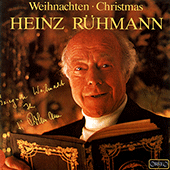
Michael Praetorius (1571 - 1621)
In the 1590s Michael Praetorius settled in Wolfenbüttel as organist to Duke Heinrich Julius of Brunswick Wolfenbüttel and was later appointed court Kapellmeister. In 1613 he moved temporarily to Dresden, at the request of the Elector of Saxony, returning to Wolfenbüttel in 1616 although continuing to undertake other work, not least in the reorganisation of musical establishments. His writings on music include the important Syntagma musicum, the second volume of which gives useful information on the musical instruments of his time.
Church Music
Descended from a family of strict Lutheran persuasion, Praetorius based a great deal of his music on Lutheran hymns and on the Latin Lutheran liturgy of the time. His Musae Sioniae, in nine parts, contains a variety of Lutheran church music, polyphonic and homophonic. It contains a number of works which have become a moderately familiar part of today’s choral and hymn repertoire, in particular the familiar carol Es ist ein Ros entsprungen (‘A Rose has Grown’), In dulci jubilo and Puer natus in Bethlehem (‘A Boy is born in Bethlehem’).
Instrumental Music
Instrumental music by Michael Praetorius is confined to his collection of dances, Terpsichore. A set of organ chorales is included in the seventh book of Musae Sioniae.
















